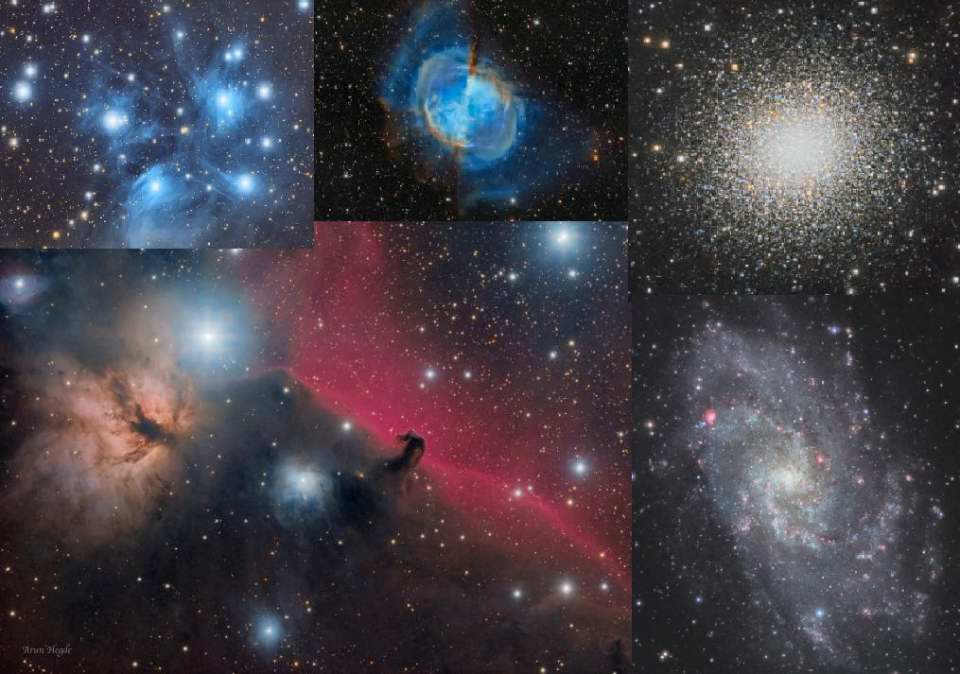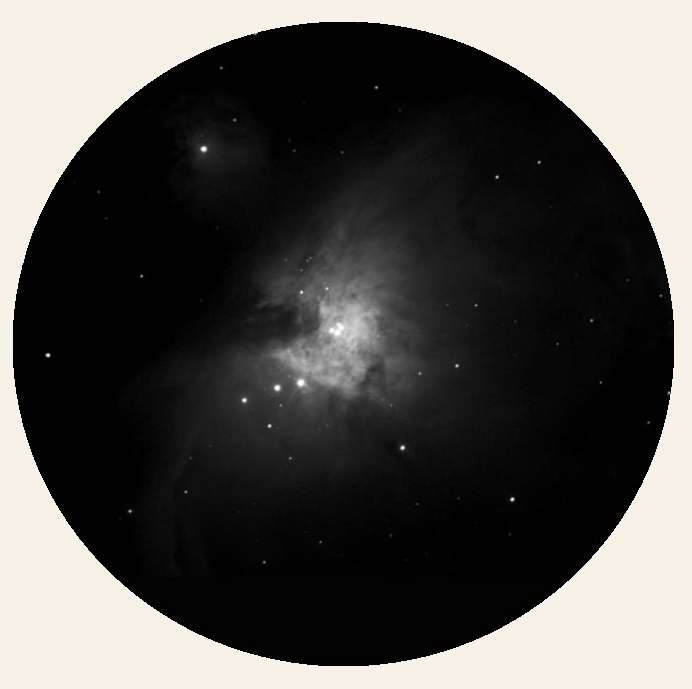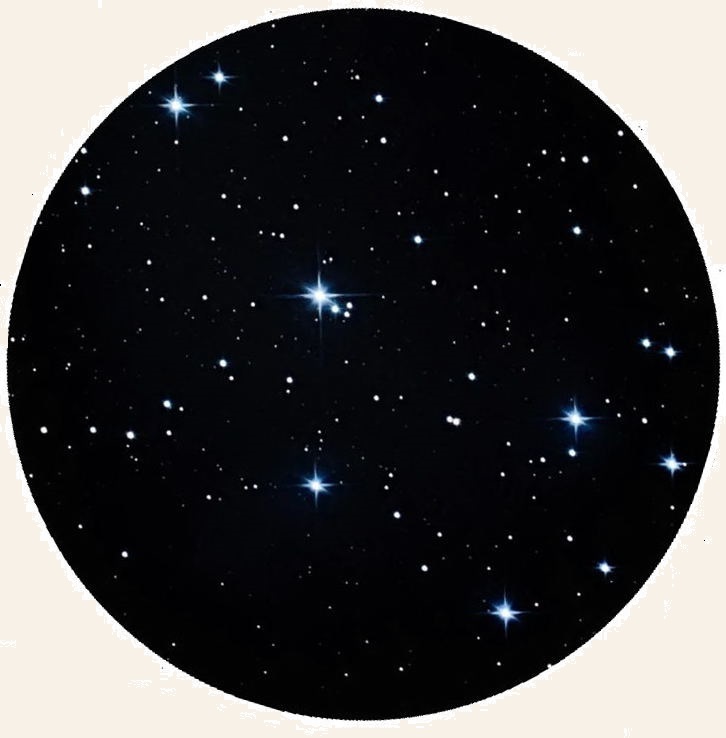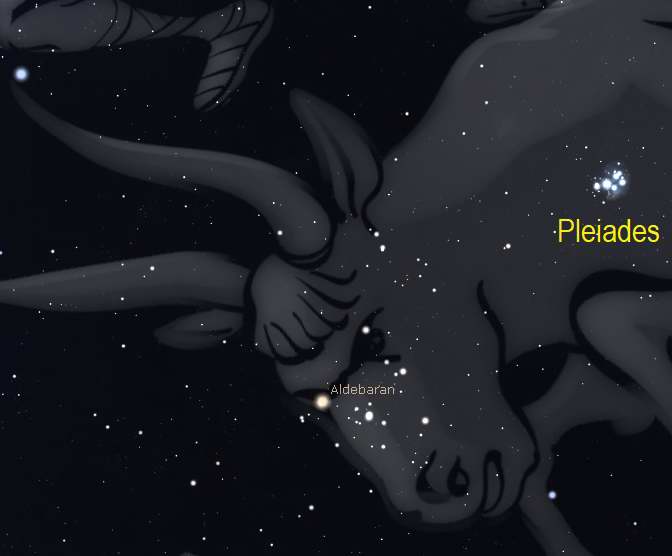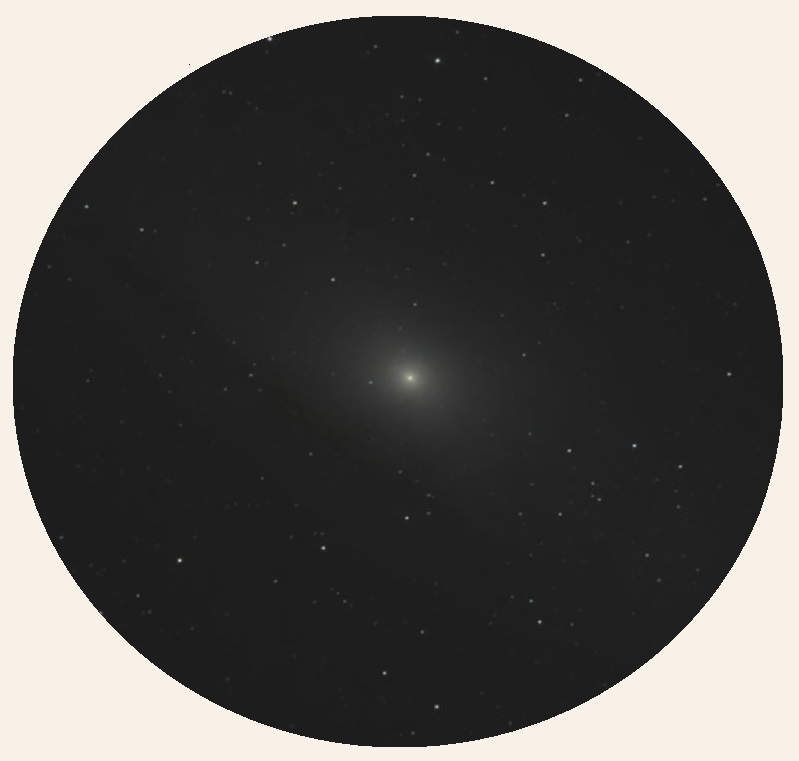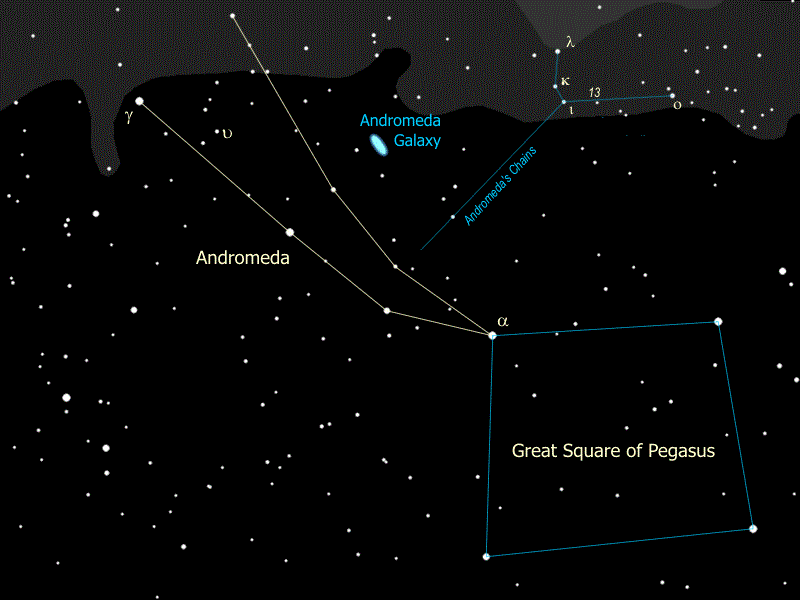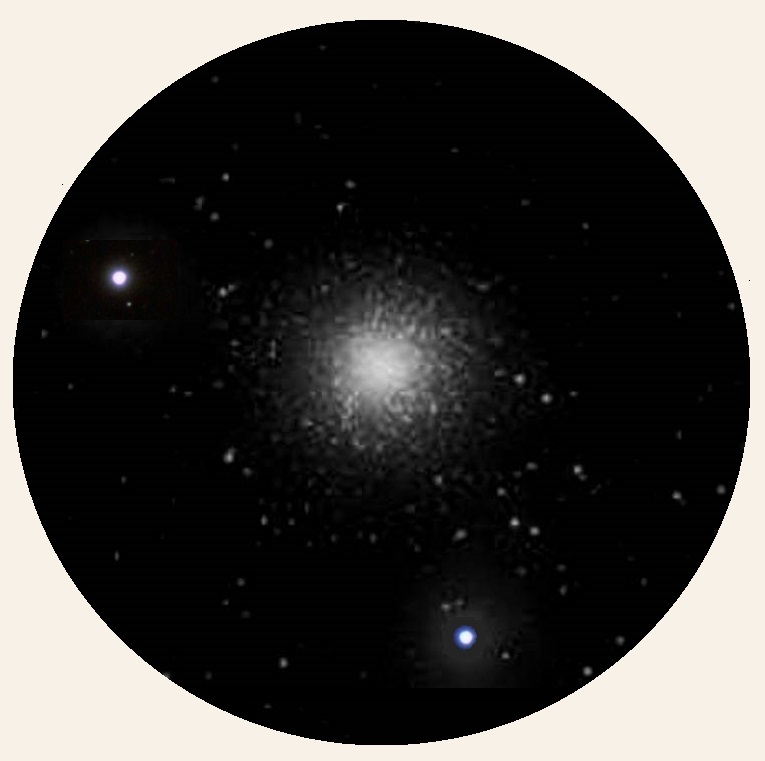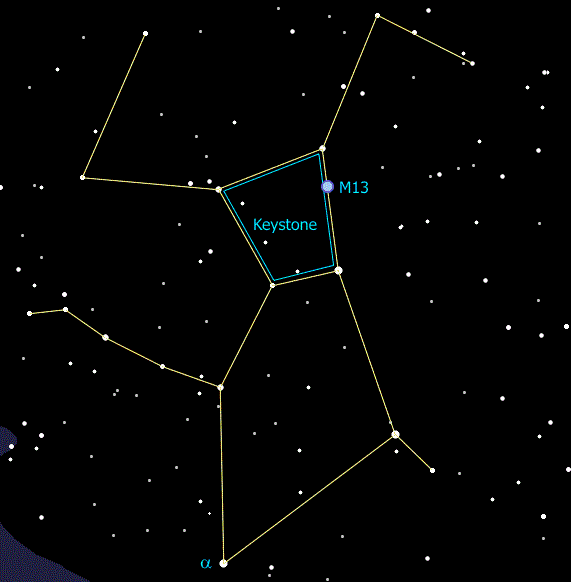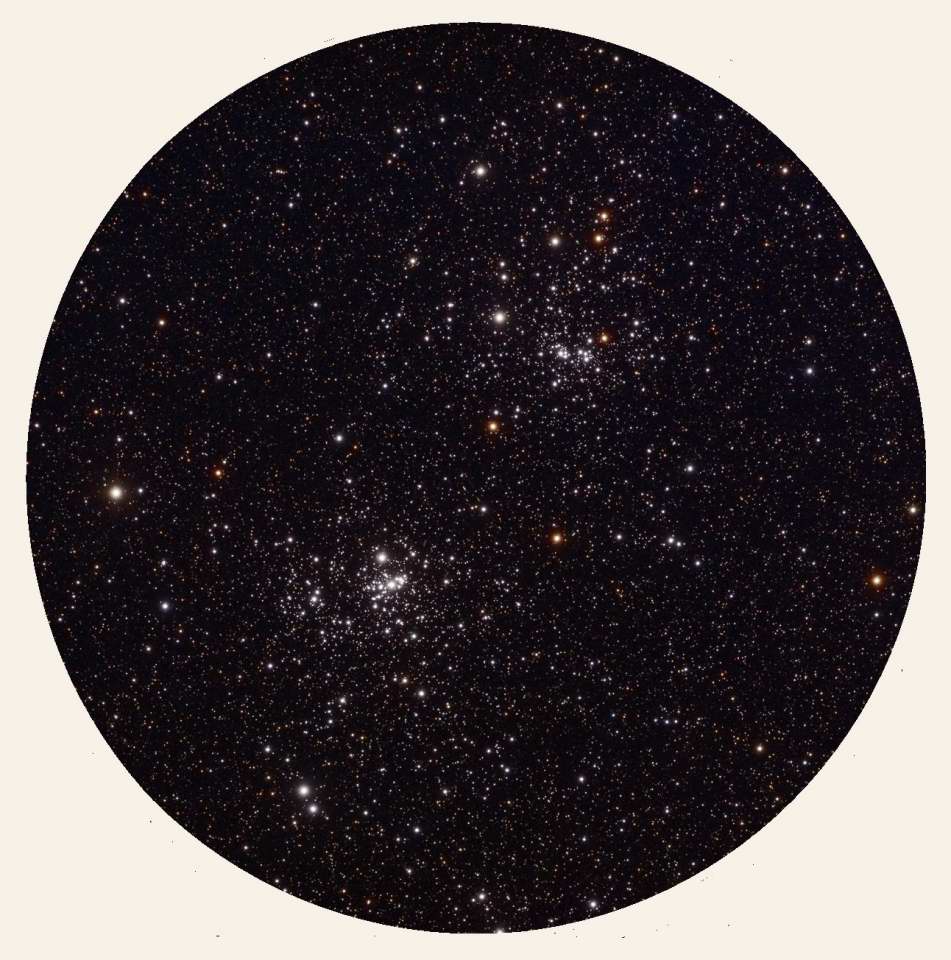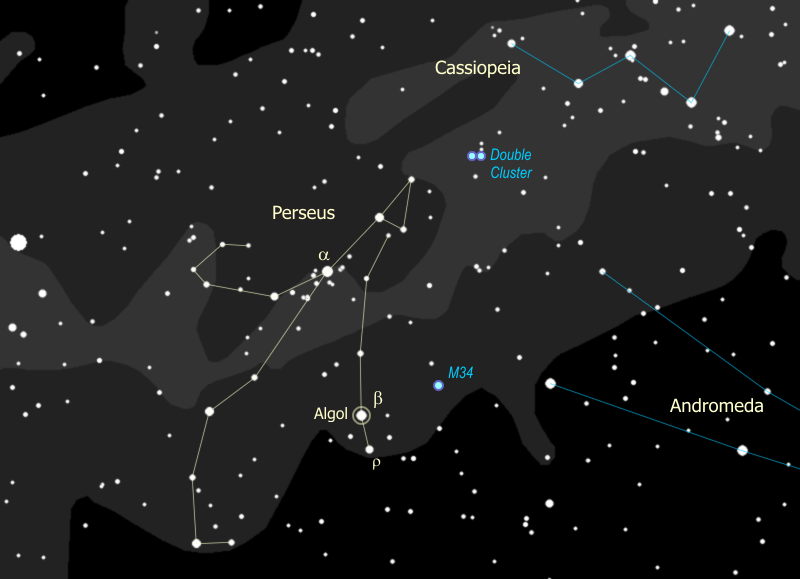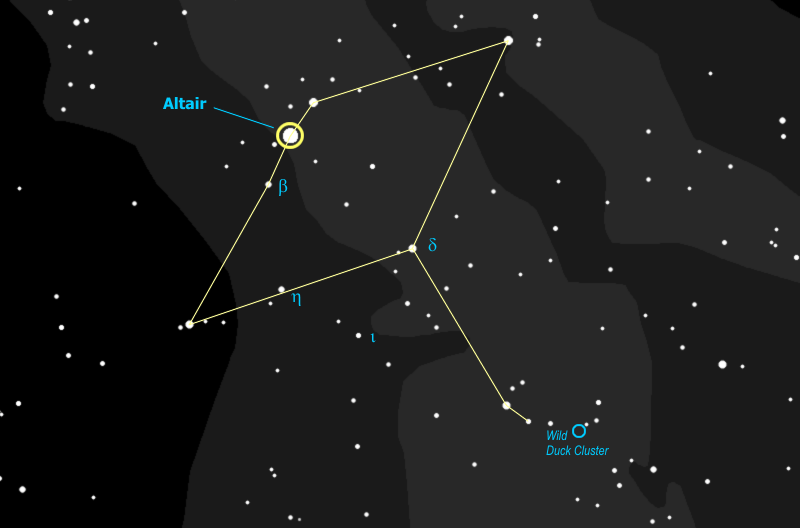Beginner's Guide
Deep Sky Objects
What is a deep sky object? It's any astronomical object that is outside our Solar System. This includes galaxies, nebulae, and star clusters.
Setting Expectations
You can see many amazing deep sky objects on the internet, and we have nearly a thousand of them right here on this website. For example, all of the images you see in the collage at the right were taken by members of the Milwaukee Astronomical Society. But unfortunately this is not what you will see visually with a telescope and especially a scope geared toward a beginner. It's not that the images were taken with instruments which are a lot larger than you'll have, but advanced astrophotography techniques utilizing time exposure and stacked images. Most of these took many hours of time to collect the photons necessary for such great images. With your eyes you only see the immediate photons of light arriving in your eyes.
But seeing objects with your own eyes is always more special than seeing a photograph. And we guarantee that when you do see photographs of what you've seen, you'll appreciate those images even more.
When, Where, and What Telescope?
Deep Sky Objects (DSO's) are best viewed under dark skies. So the "when" is ideally a moonless sky. The "where" is a place where the skies are less light polluted. This is because in general these objects are relatively dim. So we have to talk about telescopes. After magnification the one big thing a telescope does is collect light. So the bigger the objective lens or mirror, the better. Then again, as telescopes get larger they also get heavier so not as easy to move and set up. This is why the Dobsonian telescope type is so popular with deep sky observation.
Dark Adaptation / Averted Vision
When you're trying to view dim objects, it is imperative that your eyes become dark adapted. When moving to a bright location to a dark one, it is going to take some time for eyes to adjust. In bright light the pupils of your eyes contract so less light arrives to hit your retina. But getting dark adaptive is only half the battle. You also have to maintain it. That means using dim and especially red light for looking at your charts and accessories.
A technique that is very useful for observing dim objects is averted vision. It means not looking directly at your target, but looking away and seeing it in your peripheral vision. Your object will look amazingly brighter with this method. This exploits the anatomy of your eyes because you have two kinds of photo receptors: cones and rods. The cones are concentrated at the center. They are not particularly light sensitive, but they are color sensitive. The rods are outside of the cones and they are a lot more light sensitive. When the light is bright and your pupils are contracted, light does not hit them which is good because it would be painful if it did. The rods, however, do not discern color. If you've ever wondered why almost all the color goes away when it gets darker, it's because you're primarily using your rods. But bright objects like lights will show color because the cones are perceiving them.
Note that you should try looking around with averted vision. The rod density varies from person to person and you might find particularly good areas where there is a great density and thus you can see fainter.
A special note about the brightness of DSO's. When you read the magnitudes given for them that usually doesn't translate to really what you'll see in your telescope. The problem is they are generally giving you the total magnitude of the object. However, as you magnify the image that light gets spread out and effectively dims what you're seeing. So especially for finding DSO's, low power doesn't give you a larger field to find them, it also allows you to more easily see them. But after you've found them, the DSO might benefit from higher power.
Some "Easy" Deep Sky Objects
"Easy" is a relative term. We've picked out these objects because they are easy to find or they are bright enough to be seen in most telescopes. Finding DSO's can be especially challenging when they're not very bright. It's not necessarily like a planet when you'll know immediately when it's in the field of view. A great method to find these objects is to use a method called "star hopping." We have a devoted to describing the technique.
Orion Nebula
The Orion Nebula is an Emission Nebula located in the constellation Orion. It is fairly easy to see naked-eye if you know where to look. It's located in the "sword" of Orion. The main nebulosity is M42. You might be able to see a wisp of nebulosity in the star to the upper left. That is M43. There is also a great grouping of 4 stars near the center of the nebula called the Trapezium. This grouping is easily resolved in even a small telescope.
See images of the Orion Nebula taken by members of the MAS.
The Pleiades
The Pleiades is almost a one-of-a-kind DSO in that it has the trifecta of visibility as it's a great naked-eye, binocular, and telescope object. It's easily spotted in the late fall and winter sky in the constellation Taurus. It is an Open Cluster and though there is a lot nebulosity associated with this grouping, it takes a fairly large telescope to detect it, but it's easily photographed so you'll see it in most of the images you'll find on the internet.
The Pleiades is also known as the Seven Sisters. But there are actually 9 stars recognized as the basic cluster because two of them are the parents. The Pleiades is also known to most amateur astronomers as M45.
See images of the Pleiades taken by members of the MAS.
The Andromeda Galaxy
The Andromeda Galaxy is a fairly easy naked-eye object and yet it is 2.5 million light years away. But that makes it the closest galaxy and combined with the fact it is a large galaxy, it is largest apparent size galaxy. But it's actually 3 galaxies. The main big galaxy is M31 and it has two satellite galaxies, M32 and M110.
The Andromeda Galaxy is an easy object in binoculars, even in fairly light polluted skies.
Click here to see a star hopping guide to the Andromeda Galaxy.
See images of the Andromeda Galaxy (M31) taken by members of the MAS.
The Hercules Cluster
The Hercules Cluster is better known as M13. It's a globular star cluster and the brightest one that can be seen in the northern hemisphere. It can be spotted in binoculars and telescopes less than 6 inches of aperture will show only a smudge of light.
M13 being a type of star cluster can benefit greatly by magnification. Stars benefit because it dims the background so therefore increases the contrast.
Click here to see a star hopping guide to the Hercules Cluster (M13).
See images of the Hercules Cluster (M13) taken by members of the MAS.
The Double Cluster
The Double Cluster is technically in the constellation Perseus, but to the eye it seems to be between Perseus and Cassiopeia. Oddly, this object does not have a Messier designation so it's generally called the Double Cluster. But the two clusters are fairly easy naked-eye objects so actually have star name designations: h Persei and χ Persei.
This is an okay binocular object, but it's really great in any sized telescope. And unless you use fairly high power, both clusters will be in the same FOV.
Click here to see a star hopping guide to the Double Cluster.
The Wild Duck Cluster
The Wild Duck Cluster is better known as M11. It's a dense open star cluster in the constellation Scutum. It can be spotted in binoculars and telescopes and even small telescopes will show the individual stars.
M11 being a star cluster can benefit greatly by magnification. Stars benefit because it dims the background so therefore increases the contrast.
Click here to see a star hopping guide to the Wild Duck Cluster (M11).
See images of the Wild Duck Cluster (M11) taken by members of the MAS.
MAS Messier Observation List by Object Type
Here we list the entire Messier object list. It is called that because the author of the list was Charles Messier, a French astronomer. The original purpose of the list was to show the locations of fixed nebula and clusters so when a suspected comet was seen, it could be quickly verified.
Some important notes. The magnitudes for most of the objects is pretty good, but beware of those given for the nebulas which includes the galaxies. A great example is M33, the Triangulum Galaxy. It's shown magnitude of 5.7 would lead you to believe this is an easy object. But because it is a very large object by area, that brightness is spread out considerably. In most telescopes it's almost impossible to see, yet it's possible in dark skies to see it naked-eye.
Another important note about the star clusters including the globular clusters. These objects usually benefit from higher power. The reason is these are stars and magnification doesn't diffuse a star image very much and improves the contrast as it darkens the background.
| |||||||||||||||||||||||||||||||||||||||||||||||||||||||||||||||||||||||||||||||||||||||||||||||||||||||||||||||||||||||||||||||||||||||||||||||||||||||||||||||||||||||||||||||||||||||||||||||||||||||||||||||||||||||||||||||||||||||||||||||||||||||||||||||||||||||||||||||||||||||||||||||||||||||||||||||||||||||||||||||||||||||||||||||||||||||||||||||||||||||||||||||||||||||||||||||||||||||||||||||||||||||||||||||||||||||||||||||||||||||||||||||||||||||||||||||||||||||||||||||||||||||||||||||||||||||||||||||||||||||||||||||||||||||||||||||||||||||||||||||||||||||||||||||||||||||||||||||||||||||||||||||||||||||||||||||||||||||||||||||||||||||||||||||||||||||||||||||||||||||||||||||||||||||||||||||||||||||||||||||||||||||||||||||||||||||||||||||||||||||||||||||||||||||||||||||||||||||||||||||||||||||||||||||||||||||||||||||||||||||||||||||||||||||||||||||||||||||||||||||||||||||||||||||||||||||||||||||||||||||||||||||||||||||||||||||||||||||||||||||||||||||||||||||||||||||||||||||||||||||

